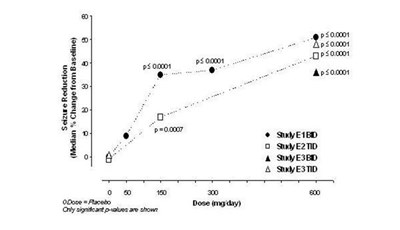Product Images Pregabalin
View Photos of Packaging, Labels & Appearance
- Pregabalin Capsules 75 mg - PDP 107
- Figure 1 - pregabalin fig01
- Figure 2 - pregabalin fig02
- Figure 3 - pregabalin fig03
- Figure 4 - pregabalin fig04
- Figure 5 - pregabalin fig05
- Figure 6 - pregabalin fig06
- Figure 7 - pregabalin fig07
- Figure 9 - pregabalin fig08
- Figure 10 - pregabalin fig09
- Figure 11 - pregabalin fig10
- Figure 12 - pregabalin fig11
- Cockcroft and Gault equation - pregabalin formula
- Chemical Structure - pregabalin str
Product Label Images
The following 14 images provide visual information about the product associated with Pregabalin NDC 45865-107 by Medsource Pharmaceuticals, such as packaging, labeling, and the appearance of the drug itself. This resource could be helpful for medical professionals, pharmacists, and patients seeking to verify medication information and ensure they have the correct product.
Pregabalin Capsules 75 mg - PDP 107

REGABALNCAPSUES is a generic version of Lyrica, consisting of 30 capsules each containing 75mg of Pregabalin. The drug is manufactured by ScieGen PHARM. INC. and may cause dizziness. It is recommended to take the capsules as directed by a physician and not to transfer the drug to anyone other than the patient for whom it was prescribed. The product is identified by HDC: 45885010730 MFR NDC: 50228-0352-90.*
Figure 1 - pregabalin fig01

The text does not provide a useful description as it contains only scattered numbers and symbols.*
Figure 2 - pregabalin fig02
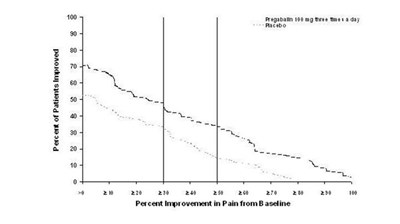
The available text does not provide a useful description. It seems to be a table or chart with some numerical values related to pain improvement, medication dosages, and time frames, but it lacks context and clear labels.*
Figure 3 - pregabalin fig03

The text contains data points related to the effectiveness of different medications in improving pain in patients. It includes the percentage of patients who experienced improvement as well as the dosages and frequency of administration for three different medications - Pregatalin 300, Pregabain 160, and Pregabalin 75. It also includes a chart showing the percentage of improvement in pain from a baseline.*
Figure 5 - pregabalin fig05
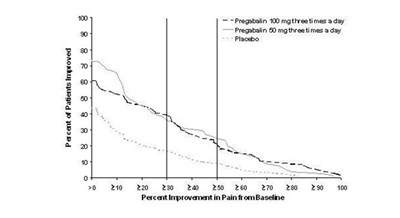
This appears to be a table showing the dosages of drugs administered to patients and the percentage of improvement in pain from baseline after treatment. "Fregabalin" was given at 100mg three times a day, "Pregataiin" was given at 80mg three times a day, and a "Placebo" was given. The table shows that 38 out of the total number of patients improved, but it is not clear what that total number is. The percentage of improvement in pain ranges from 0.8 to 100, with most patients showing an improvement in the 20-30% range.*
Figure 6 - pregabalin fig06

This appears to be a table with text related to different studies and dosages of a medication. It is not possible to derive any actionable insight from the limited information provided.*
Figure 9 - pregabalin fig08

This graph shows the percentage improvement in pain from baseline for patients taking Pregabalin at daily doses of 300mg and 450mg versus a placebo. The x-axis shows the range of improvement from 20 to 280 percent and the y-axis shows the percentage of patients improved.*
Figure 10 - pregabalin fig09
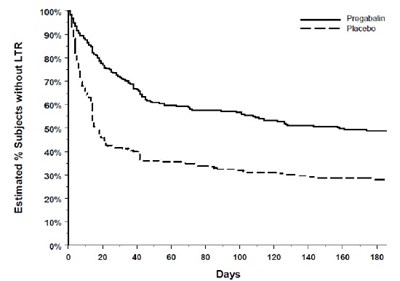
This text represents a chart showing the percentage of subjects without LTR, with estimated values ranging from 0% to 100%, along with two treatment options (Progabain and Placebo) displayed on the X-axis. The chart also indicates the time period in days (ranging from 0 to 180) on the Y-axis.*
Figure 12 - pregabalin fig11
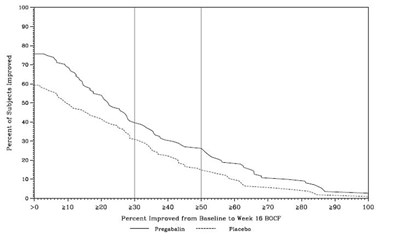
The text shows a graph representing the percent improvement of subjects from baseline to Week 16 BOCF in a study involving Pregabalin and Placebo. The x-axis shows the increments of 10 from 210 to 270, and the y-axis shows the percentage improvement from 0 to 100. The study resulted in 100% improvement, indicating a positive outcome, although it is not clear which treatment (Pregabalin or Placebo) was responsible for the improvement.*
Cockcroft and Gault equation - pregabalin formula

This text appears to be a formula for calculating creatinine clearance (CLCT) based on a person's age, weight, and serum creatinine levels. However, the has introduced some errors into the text, making it difficult to interpret clearly. In the first part of the formula, it seems to indicate that one should subtract a person's age in years from 140, and then multiply that value by their weight in kilograms. For female patients, the resulting value is then multiplied by 0.85. The second part of the formula appears to involve multiplying 72 by the person's serum creatinine level in mg/dL. However, due to the errors introduced by the , it is difficult to provide a more detailed or accurate description of this text.*
* The product label images have been analyzed using a combination of traditional computing and machine learning techniques. It should be noted that the descriptions provided may not be entirely accurate as they are experimental in nature. Use the information in this page at your own discretion and risk.

